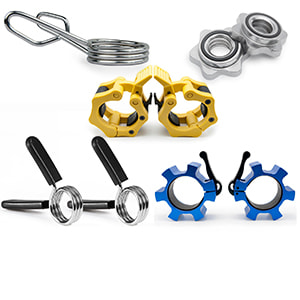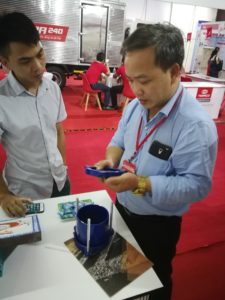How to Choose the Right Bumper Plates
Just how to Choose the Right Bumper Plates
Ready to throw some weight around your home or garage gym and also confused about bumper plates? This will certainly help determine what type of plates you utilize.
Exactly how to Select the Right Bumper Plates
Steel plates
Powerlifting or regular barbell training, using deadlifts, squats and also presses do not need bumper plates. Several strength trainers have a tendency to choose bumpers, at least for deadlifts, as they do not appear and feel like a rickety tank.
Steel Weights Coated with Rubber/Urethane
Urethane-coated steel plates are likewise a go-to for strength training needs. Commercial gyms often make use of these due to the fact that they’re far better looking than raw iron, more secure, less complicated to haul around the gym as well as are quieter.
Coated plates price more detailed to bumper plates, in spite of doing not have distinct functions of bumpers. They can not be dropped from overhead, therefore show up lame for Olympic weightlifting. If they’re in your price array, appreciate the cleaner appearance than raw iron, as well as like the absence of clanging and knocking, these could be for you. However, by investing a bit a lot more in bumper plates, you’ll get more value.
Bumper plates
“Bumpers” for short, are a sort of weight plate for Olympic bars that is made virtually completely of thick rubber (with a steel or brass collar in the middle that approves an Olympic bar).
Bumper Plate Characteristics: Home plates are Olympic-sized, been available in both kilos as well as extra pounds as well as supply the exact same weight spectrum as regular cast-iron weightlifting/strength training plates. The bumpers normally can be found in black, yet colored variations are conveniently available. Competition bumpers tend to strictly employ colored varieties.
Olympic weightlifting birthed bumpers, as well as further pressed their development. Olympic weightlifters used cast-iron plates, up until lifting (and thoroughly decreasing as well as dropping) them became a safety risk and impractical. Weightlifters can now add more weight to the bar without bulky rubber weights or cast-iron.
Bumper plates are frequently sold in pairs, and in a wide array of finishes and colors. There are much more important details to consider. Identify these four attributes of high quality bumper plates when choosing the very best for you.
- SLIDING: The bumper’s inner, steel ring ought to fit the bar’s sleeve well. Otherwise, the weights can move if the rings are also wide.
- BEND: Ten-pound weights are fragile and notoriously thin. A mix of bad rubber high quality as well as excess slimness will bend home plates, leading to an imbalanced load, that makes for an unstable manage the ground.
- Durability: Cracking postures the # 1 risk to bumpers. Bumper plates obtain dropped continuously, coming to be gluttons for penalty. Substandard high quality plates will certainly fracture around the internal ring, which inequalities the bar while floor resting.
- Bounce: They should bounce just right, more like a bunny hop than a Jack-in-the-box popping in your face.
Bumper Plate Advantages
Doing Olympic lifts, when weights are dropped from overhead, rack position or hips, requires bumpers. For this reason, bumpers are ideal for garage gym use.
Workout Flexibility: Bumper plates additionally give future versatility. Lots of professional athletes are going back to Olympic lifting again. Even if you don’t find yourself at a fitness degree or doing exercises that need them, you might want to invest in them currently, so you have the option later on.
Quieter: If you’ve ever before exercised with steel, you know just how promptly gyms can sound like a building and construction site. Despite just how smooth or gentle you are, steel plates can sound like horrible church bells. Bumper plates don’t crash together like cymbals in a marching band.
Do not feel you just need to stock your home gym with bumpers. Some garage gym owners match ‘n’ mix steel plates and also bumpers, as each fits. Continue and read about the various bumper plate types if you’re certain bumper plates are the best fit for you.
Technique Plates
They commonly come in 2.5, 3.75 and 5-kilogram plates, as well as 5 and 10-pound versions. If you’re learning Olympic lifting, the technique plates hone your form, with a light load on the bar, while still feeling plates on the bar.
Black Training Bumpers (in pounds)
Black training bumper plates serve as the go-to for most training types. You’ll find an endless supply of black training bumpers out there. You shouldn’t love a bumper for looks alone, as this isn’t a good indicator of craftsmanship when it comes to rubber quality, processing methods and testing methods (if they’re even used).
Color bumper plates (in kilograms and pounds)
Color bumper plates adhere to the color coding plans outlined by the International Weightlifting Federation and the International Powerlifting Federation. They are as complies with:.
- Red= 25 kg or 55 pound.
- Blue= 20 kg or 45 lb.
- Yellow= 15 kg or 35 pound.
- Green= 10 kg or 25 lb.
Some less than desirable brand names will certainly mix up the color coding, making use of red or yellow for 45 pound as well as utilize environment-friendly for 25 pound, while dropping an entire plate from the schedule.
The basic color system ensures that coaches and athletes easily identify weight poundages in what can be a chaotic, or draining, training environment. Color bumper plates tend to be softer than black bumpers, so the noise they produce is a bit less too.
Competition Bumper plates (in kilograms and pounds).
Competition bumpers set the gold standard for high quality and performance due to a variety of advantages.
- Steel disc under rubber surface removes steel to metal call.
- Creates large sound decrease, decreases resonance and keeps bolts tight.
- Accuracy of the asserted weight, generally to within 10 grams or less.
- Unbeatable sturdiness.
These pro-level plates will cost you a pretty penny and primarily serve as a must-have for high-end gyms. In a garage setting, the added reliability and durability of competition plates compared to standard bumpers, won’t do you any good, especially when you factor in the price.
A variety of brand names also have training versions available of their competition plates. The plates are practically the exact same, except that the training plates aren’t calibrated for weight accuracy, hence aren’t accredited.
Fist Bump to Conclusions
An entire number of individuals, consisting of some of your extremely own, get perplexed with this excessive swirl of information regarding which bumpers are the excellent, the poor and also the hideous. Here’s the easiest as well as most straightforward approach to bumper plates, in two parts.
Steel insert: The brass isn’t greener on the other side. Years ago, many manufacturers used brass for the bumper plate insert. Nowadays, thankfully most producers use stainless steel, but some still try and pass some brass.
Rubber make-up: 2 rubber types dominate bumper plate manufacturing, which are hard and soft. The soft type employs crumb rubber for instance, that substantially enhances longevity as well as lifespan. Crumb rubber bumpers bounce high, offer decent bend, and usually have a harsh look. These are optimal for lifting outside or when there’s no mat or platform under the athlete. The other kind employs a tough rubber, which doesn’t jump, as much as make a thud when dropped. The difficult rubber bumpers have a nicer finish, but will undoubtedly mess up with duplicated usage, and their sturdiness fades in comparison to recycled rubber bumpers.
Just how can I choose the right bumper plate weights for me?
Bumper plates can be found in a couple of standard dimensions, and also are normally marketed in kilograms or pounds. Fringe Sport produces bumpers in extra pound weights. Below is a graph with harsh pound and also kg weights:
Bumper WeightBest Weight For:.
10 lbs ~ 5 kgGreat for training or finding out Olympic lifts.
15 pounds ~ 7 kgSame utilizes as the 10s, yet this offers better sturdiness at only a slightly heavier weight.
25 pounds ~ 11 kgA very popular weight as they are really durable and also throwing these on an Oly bar gives you 95 pounds (Fran Rx).
35 pounds ~ 16 kgA terrific size for adding even more weight on the bar.
45 lbs ~ 20 kgThe most popular dimension for gyms – 45’s actually allow you load up your bar and make some severe strength gains.
55 lbs ~ 25 kgWhen the 45s simply don’t suffice, we have 55lb bumpers to add some serious weight to the bar.
Ultimately, determining the best bumper plate for you comes down to three factors: shipping price, product price and warranty. Don’t overlook the vital importance of the warranty when bumper buying. Other warranty plans may cover 25s, 35s and 45s for a year, while only doing 90 days on fragile 10s and 15s.
What exercises can I finish with bumper plates?
Essentially bumper plates are used with a barbell, but you can additionally do workouts with a single bumper plate for an effective workout.
- Snatch.
- Clean and also Jerk.
- Press.
- Thruster.
- Deadlift.
- Squat.
- Bench.
- Overhead lunge.
- And much more!
Coated plates price closer to bumper plates, despite lacking distinct features of bumpers. If you’re certain bumper plates are the best fit for you, continue and read about the various bumper plate types.
Color bumper plates tend to be softer than black bumpers, so the noise they produce is a bit less too.
Rubber composition: Two rubber types dominate bumper plate production, which are hard and soft. The hard rubber bumpers have a nicer finish, but will inevitably scuff with repeated use, and their durability pales in comparison to recycled rubber bumpers.



